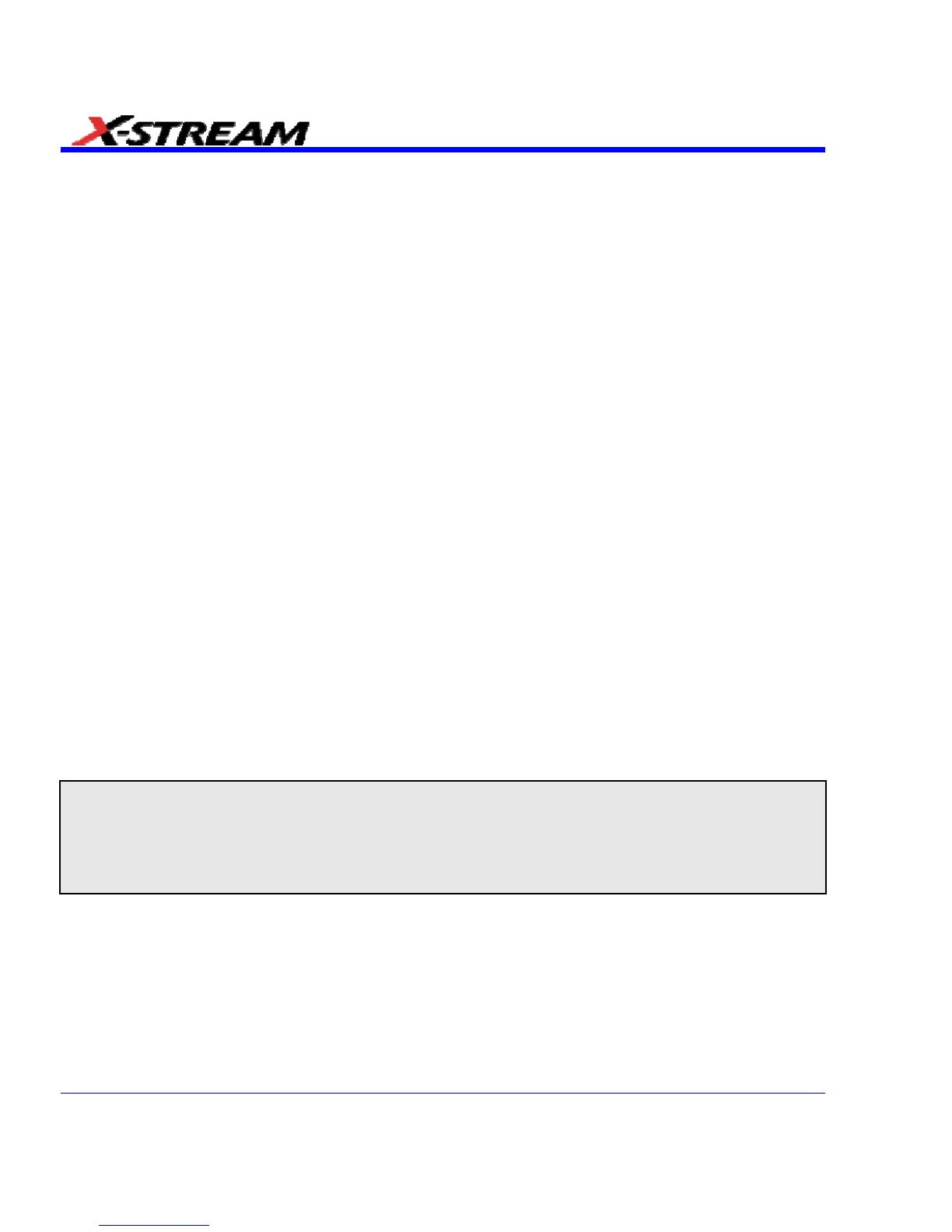314 SDA-OM-E Rev H
6. The Pattern Length (number of bits in the pattern) control sets the repetition length of the
data pattern in the signal under test. Serial data signals generally transmit a repeating data
pattern of some sort. For example a PRBS7 pattern repeats every 127 bits while a K28.5
repeats every 20 bits. Enter the pattern length in the Pattern Length control. Alternatively,
the SDA can automatically find the pattern length by means of the Find Pattern Length
button. The Find Pattern Length button determines the pattern repetition length (if any) in
the current acquisition and sets the Pattern length field to this value. The Pj measurement
uses the pattern length value to determine which peaks in the jitter spectrum are caused by
the pattern repetition. An incorrect value in the Pattern Length control will result in
overestimating the Pj and, as a result, underestimating the random jitter.
7. The Multiplier, Deskew, and Clock Slope controls adjust the positioning of the clock relative
to the data edges when an external clock source is selected. These controls are active only if
the Recover clock checkbox is left unchecked. The Multiplier control is used when a sub-
rate clock is applied. For example, if a clock signal at 1/10 the bit rate is used, the Multiplier
control should be set to 10 in order to get a single eye pattern on the display.
The Deskew control enables positioning of the clock edges relative to the data signal. It shifts
the clock signal relative to the data signal.
A clock signal goes through one complete cycle during each bit interval. The edge timing can
be measured relative to the rising or falling slope of the clock by means of the Clock Slope
setting.
The Tx Density control indicates the ratio of transitions in the data record to the total number
of bits in the signal. Normally, an NRZ data stream does not have transitions during every bit
interval. For example, there are cases where adjacent 1 or 0 values exist. On average,
approximately 50% of the bit intervals have transitions so the Tx density is 500e-3. The actual
acquired data set may have a transition density different from 50%, however. The total jitter
measurement uses this transition density to normalize the measured histogram into a pdf
(probability density function). Many instruments simply assume 50% when performing this
normalization which can lead to errors. These errors are eliminated in the SDA through the
use of the measured transition density in the normalization process. The Tx density is
automatically measured when the Find Pattern Length button is pressed.
Please Note the Following:
• If the pattern length exceeds the number of bits in the acquired waveform or there is no repeating pattern present,
the control indicates a value equal to the total number of bits in the current acquisition. In this case, the pattern
length control should be set to 2 so the Pj is not underestimated.
• Overestimated Pj values result in incorrect pattern length. Such overestimations cause Dj to read high and Rj to read
low.

